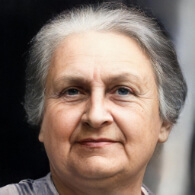Nido (Montessori)
"Nido" translates to "nest" in Italian and is used in the Montessori context to refer to an environment designed specifically for infants. Not all Montessori schools that offer an infant program use this term[1].
In the Nido, the infant has the opportunity to freely move and explore the environment, which is carefully designed to be safe, nurturing, and stimulating. There are areas for movement, eating, sleeping, and care of self, with materials at the child's level and available for exploration[2].
Montessori Quotes on Nido
"The first essential for the child's development is concentration. The child who concentrates is immensely happy."
— Maria Montessori, "The Absorbent Mind"
Research and Critiques on Nido
Pro
The Nido environment, designed according to Montessori principles, supports the child's natural development, offering them the chance to explore and engage with their environment at their own pace[2]. The environment encourages autonomy, motor development, and cognitive development from a very early age[2].
Cons
Critics may argue that infants are too young to benefit from a Montessori environment or to develop independence[3]. Some may also critique the absence of traditional play items like cribs and high chairs that are usually found in infant environments[4].
Comparison to Other Methods
Most infant care settings will have areas for eating, sleeping, and diapering, but might not provide the same level of autonomy for the child to move and explore. Montessori Nido environments are unique in their emphasis on freedom of movement and independence from an early age[2].
Glossary of Montessori Terms
The Glossary of Montessori Terms is a collection of specific terms and vocabulary that are related to the Montessori method of education, primarily focusing on the theory and practice for children aged 3 to 6. The jargon used by Montessori educators offers a unique insight into child development as discussed by Maria Montessori. The 'Montepedia Glossary of Montessori Terms' originated from a glossary that was compiled by the late Annette Haines from the Montessori Training Centre of St. Louis, at the request of Molly O'Shaughnessy from the Montessori Centre of Minnesota. The reason behind the creation of this glossary was to supplement O'Shaughnessy's lecture at the Joint Annual Refresher Course that took place in Tampa, Florida, in February 2001.[5] The glossary has since been expanded and updated with additional 'Montessori Terms'.
- 3-Hour Work Cycle
- Absorbent Mind
- Adaptation
- Adolescence
- Albums
- Advisor
- Analysis of Movement
- Casa dei Bambini
- Children of the Earth
- Children's House
- Choice
- Classification
- Concentration
- Concrete to Abstract
- Control of Error
- Coordination of Movement
- Cosmic Education
- Creativity/Imagination
- Cycle of Activity
- Development of the Will
- Deviations
- Didactic Materials
- Director
- Discipline from Within
- Earth Child
- Elementary Classroom
- Erdkinder
- Exercises of Practical Life
- False Fatigue
- Freedom of Choice
- Freedom within Limits
- Grace and Courtesy
- Great Stories
- Ground Rules
- Guide
- Help from Periphery
- Human Tendencies
- Imagination
- Independence
- Indirect Preparation
- Indirect Presentation
- Isolation of a Difficulty
- Intrinsic Motivation
- Job
- Kinderhaus
- Language Appreciation
- Language Acquisition
- Learning Explosions
- Materials
- Materialised Abstractions
- Mathematical Mind
- Maximum Effort
- Mixed Ages
- Montessori Materials
- Nido
- Montessori Materials
- Normalization
- Obedience
- Peace
- Personality
- Planes of Development
- Points of Interest
- Practical Life
- Phonemic Awareness
- Phonics Instruction
- Phonological Awareness
- Prepared Environment
- Presentation
- Primary Classroom
- Psychic Embryo
- Reading Comprehension
- Repetition
- Respect
- Self-Discipline
- Self-Regulation
- Sensitive Periods
- Sensorial Materials
- Simple to Complex
- Socialization
- Society by Cohesion
- Sound Games
- Three-Hour Work Cycle
- Valorisation
- Vocabulary Enrichment
- Work
Please help to translate this page into your local language
References
- ↑ Lillard, A. (2005). Montessori: The Science Behind the Genius. Oxford University Press.
- ↑ 2.0 2.1 2.2 2.3 Montessori, M. (1972). Education for Human Development: Understanding Montessori. Schocken Books.
- ↑ Thayer-Bacon, B. (2012). Maria Montessori, John Dewey, and William H. Kilpatrick. Educational Philosophy and Theory, 44(6), 590-602.
- ↑ Lopata, C., Wallace, N. V., & Finn, K. V. (2005). Comparison of academic achievement between Montessori and traditional education programs. Journal of Research in Childhood Education, 20(1), 5-13.
- ↑ Haines, A. (2001). Glossary of Montessori Terms. Montessori Training Centre of St. Louis.
